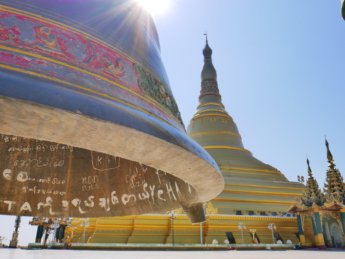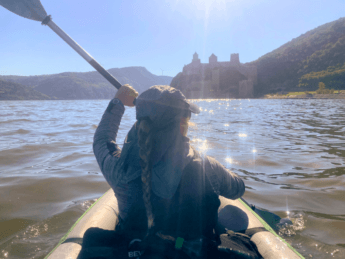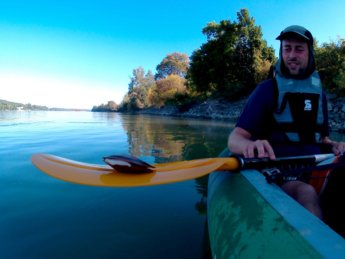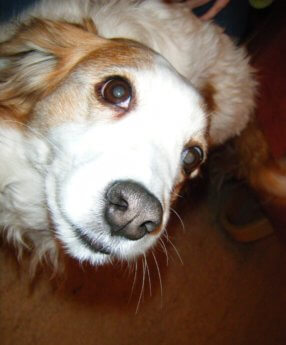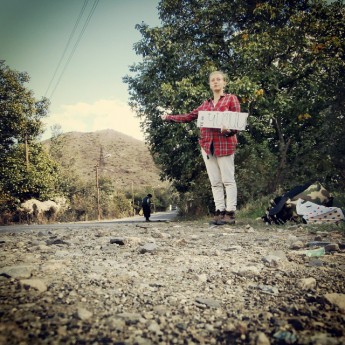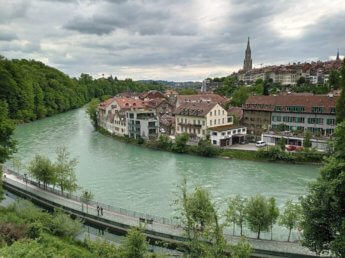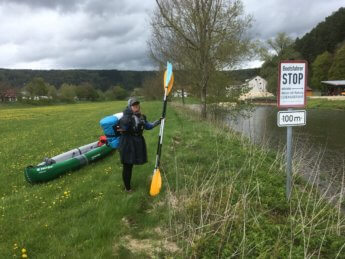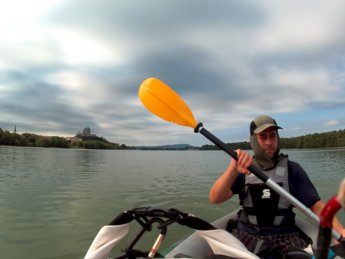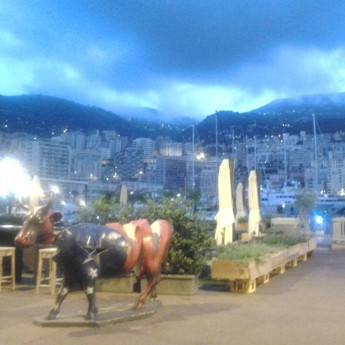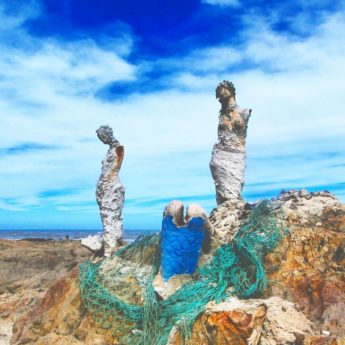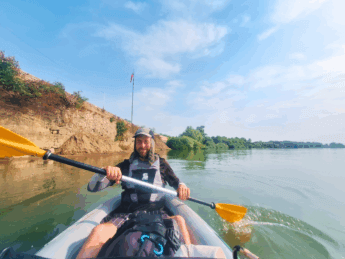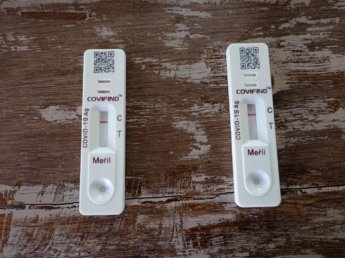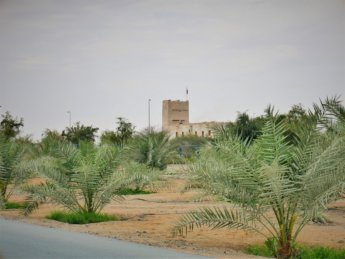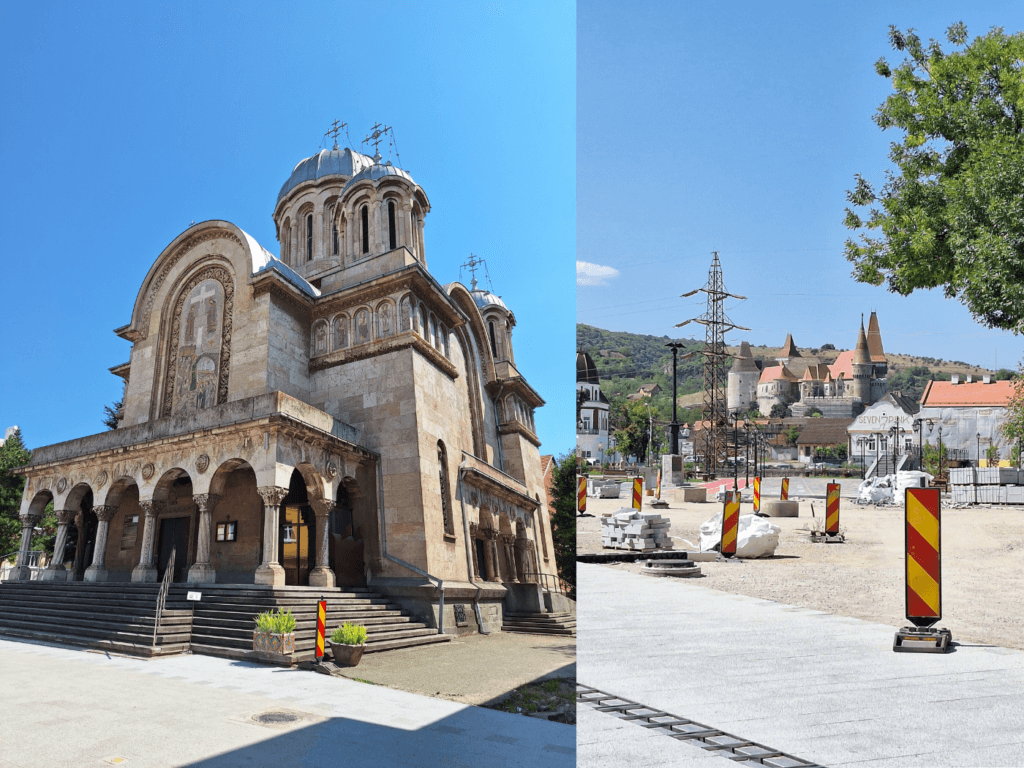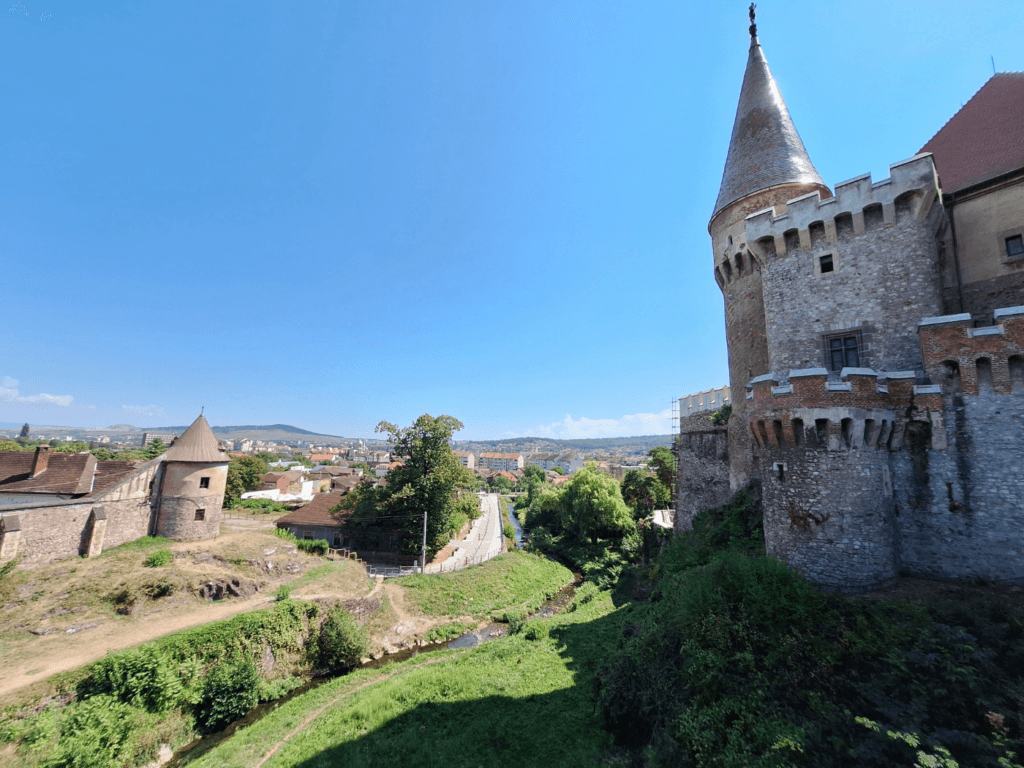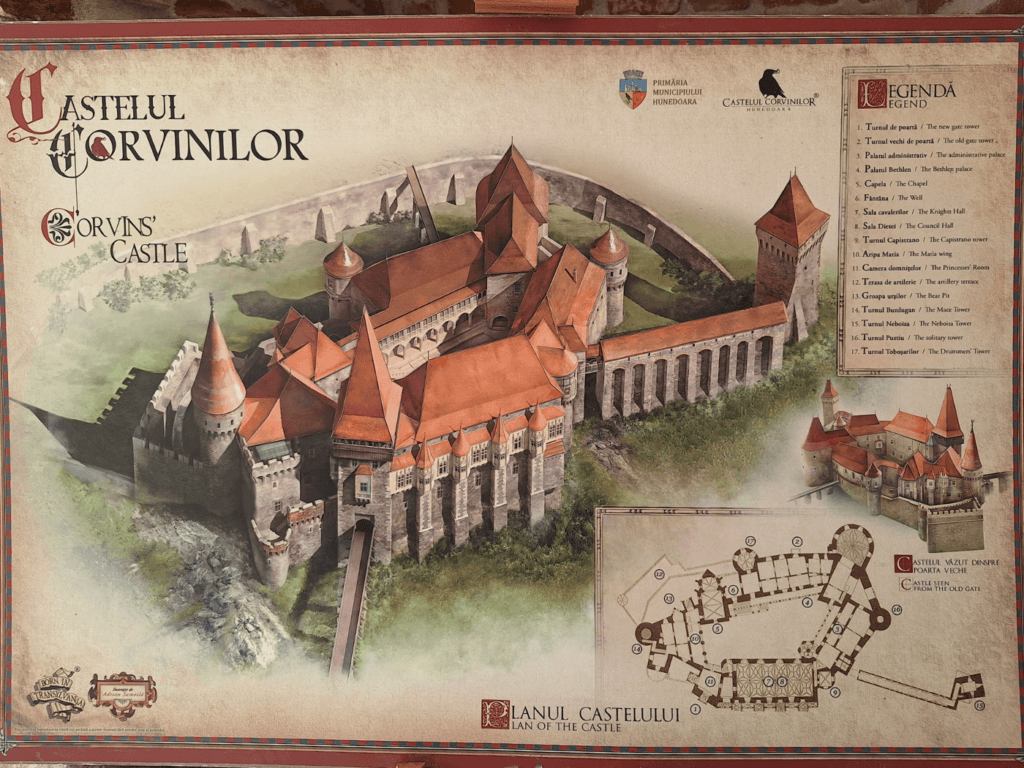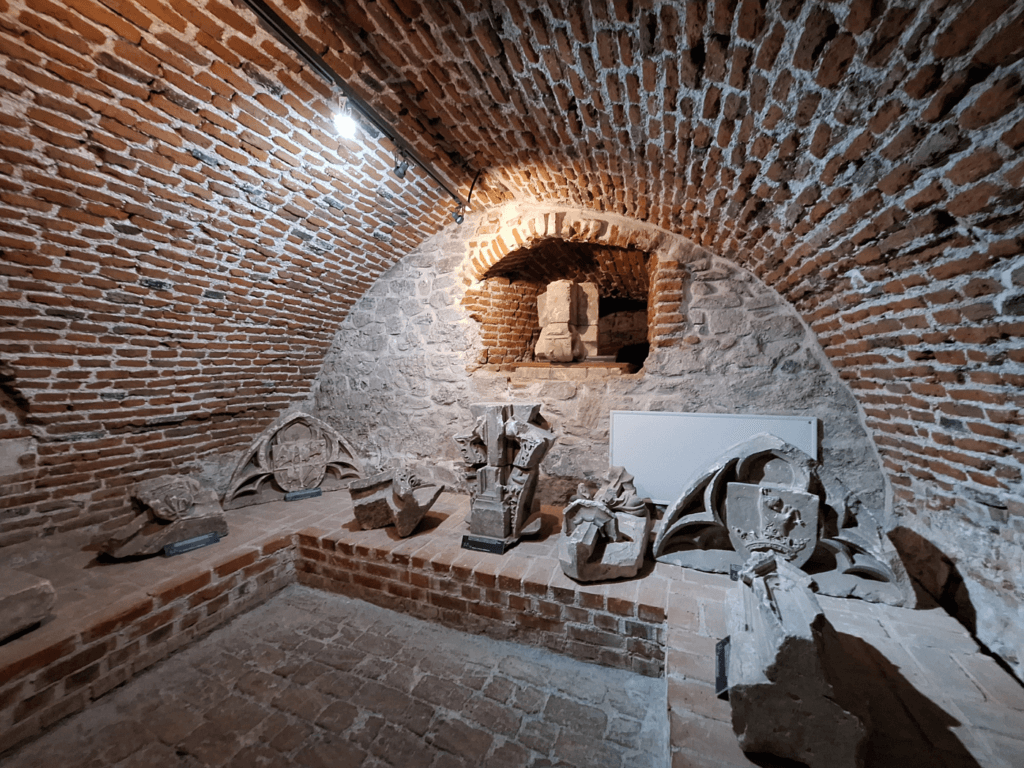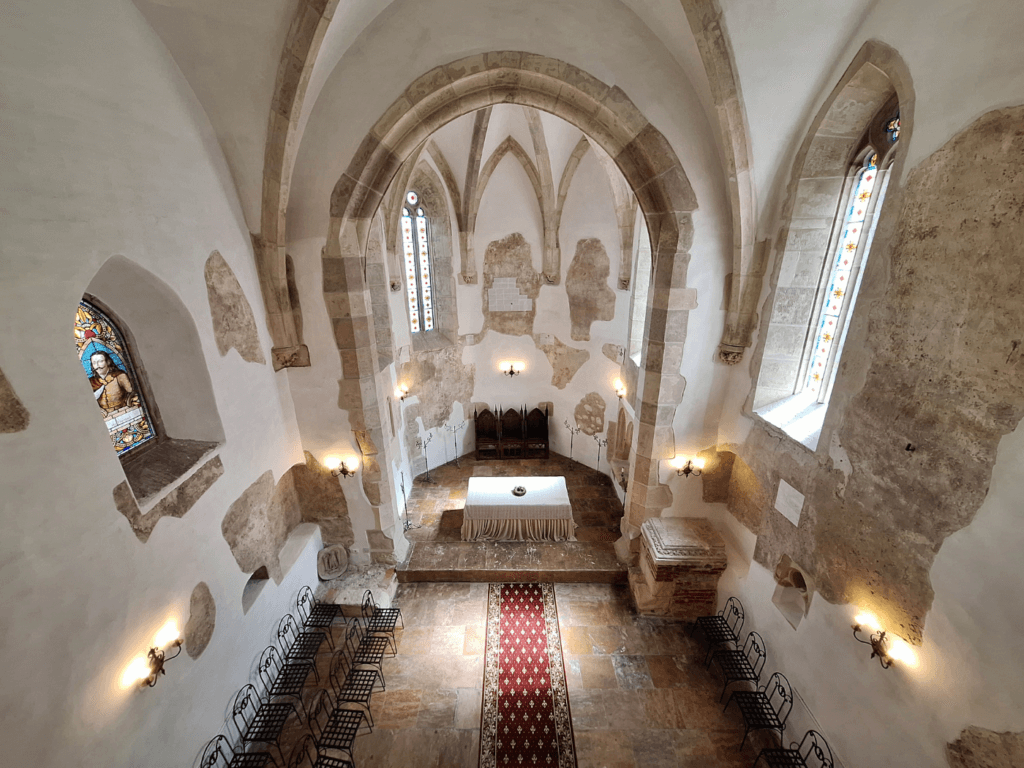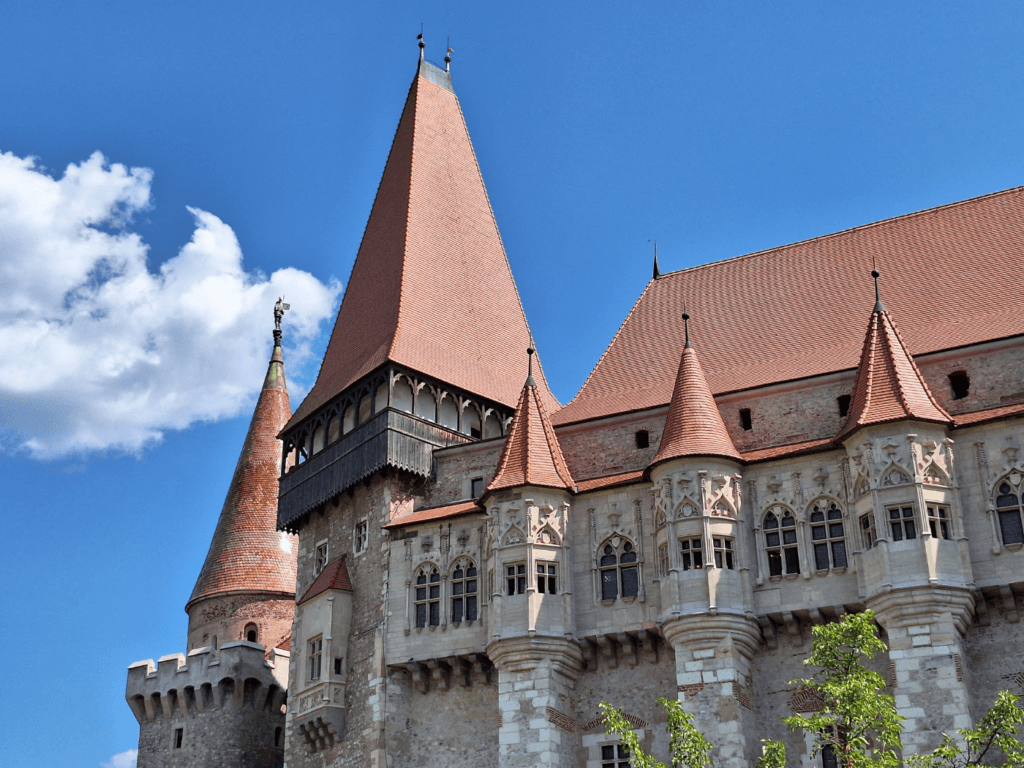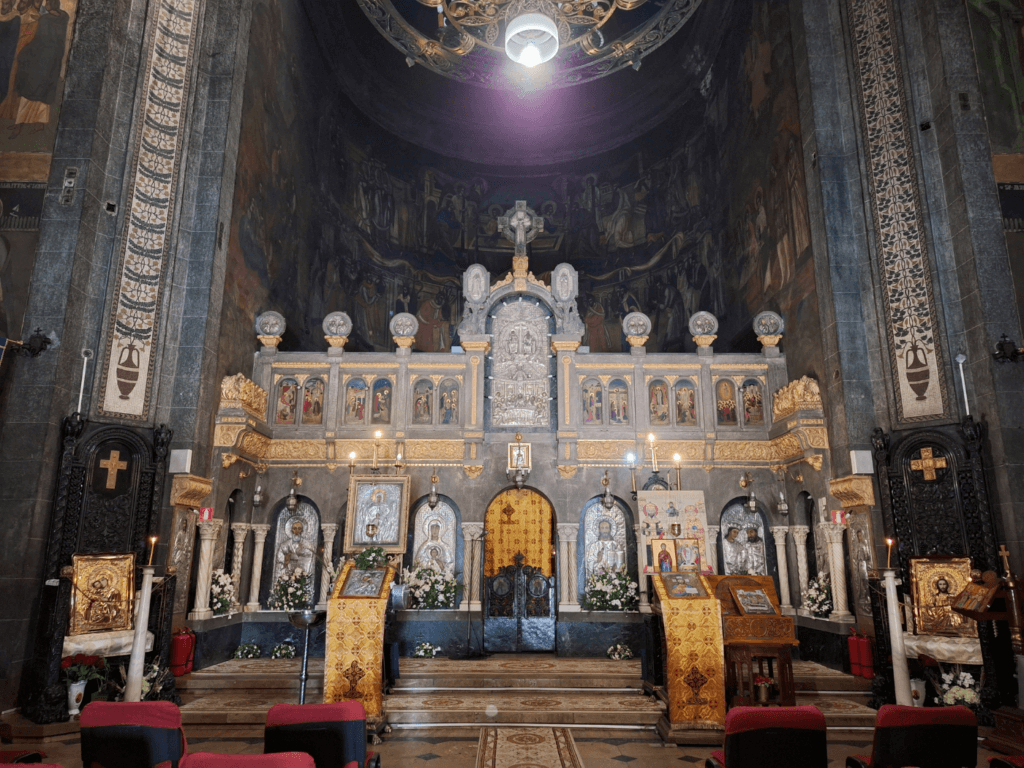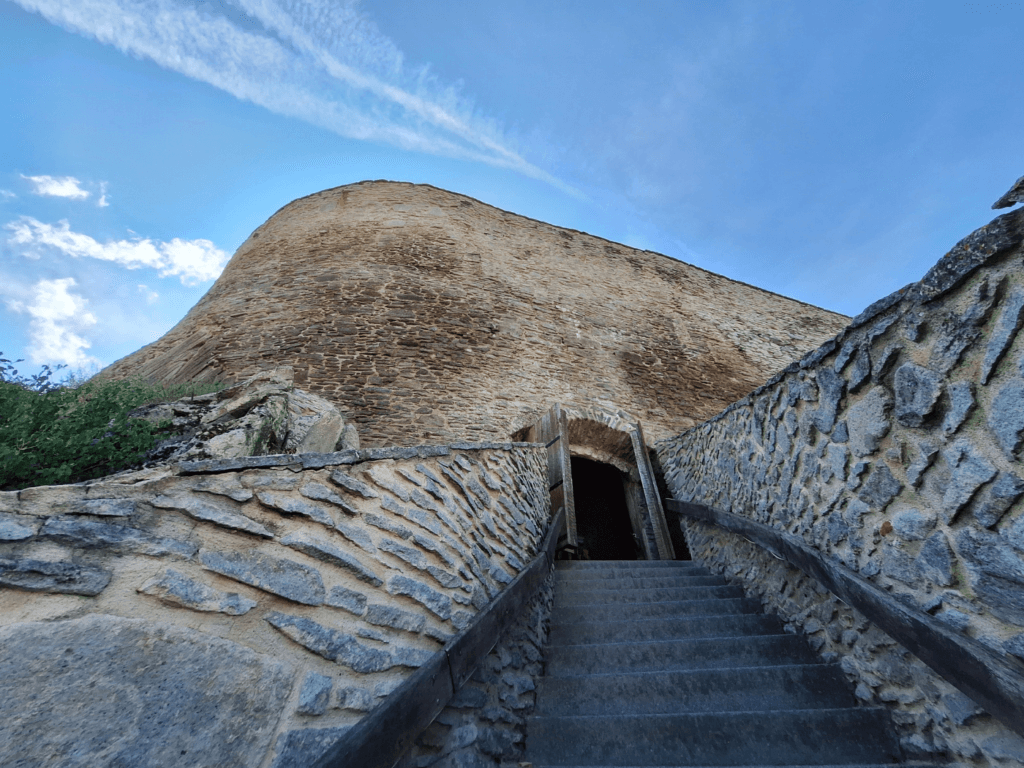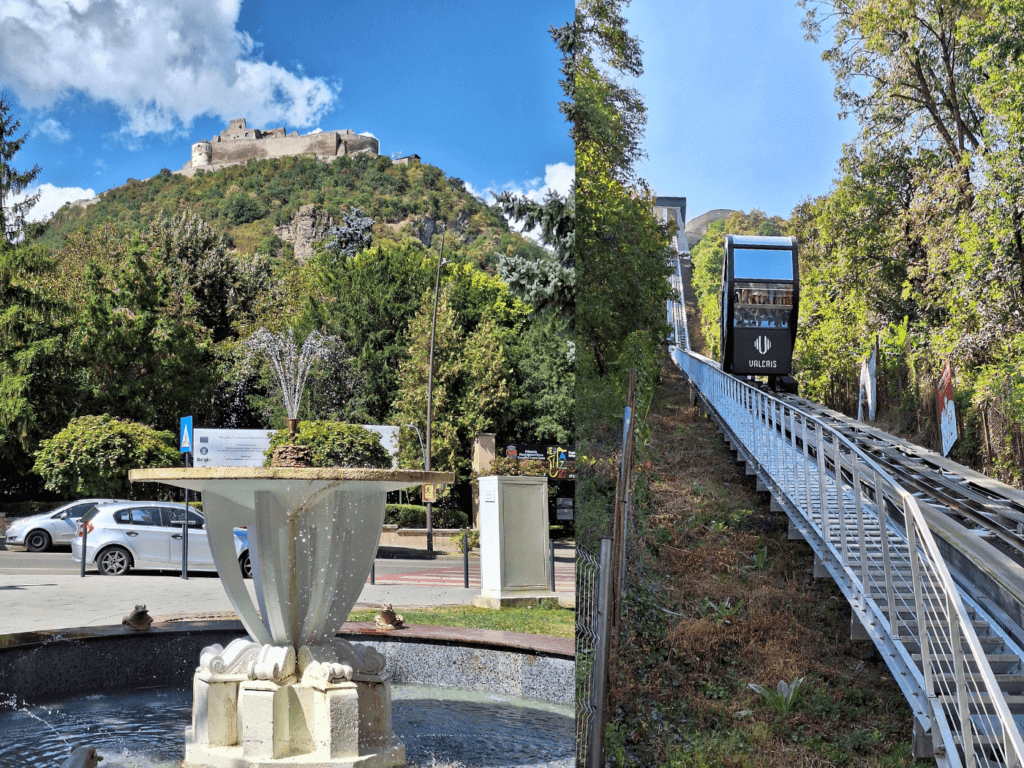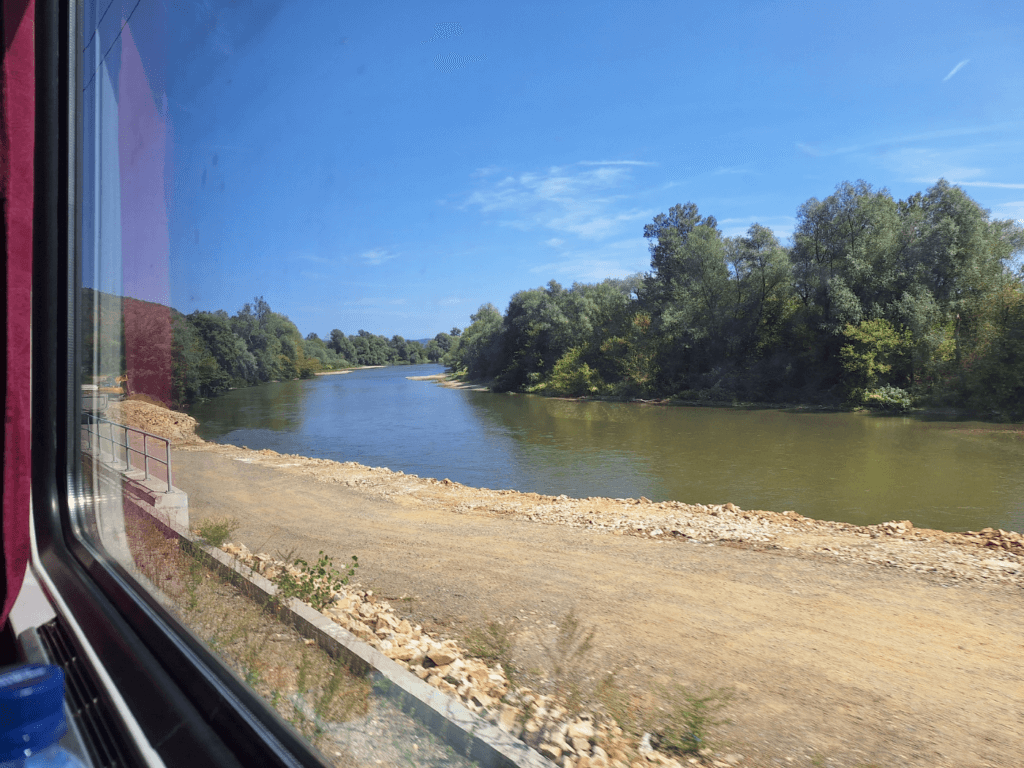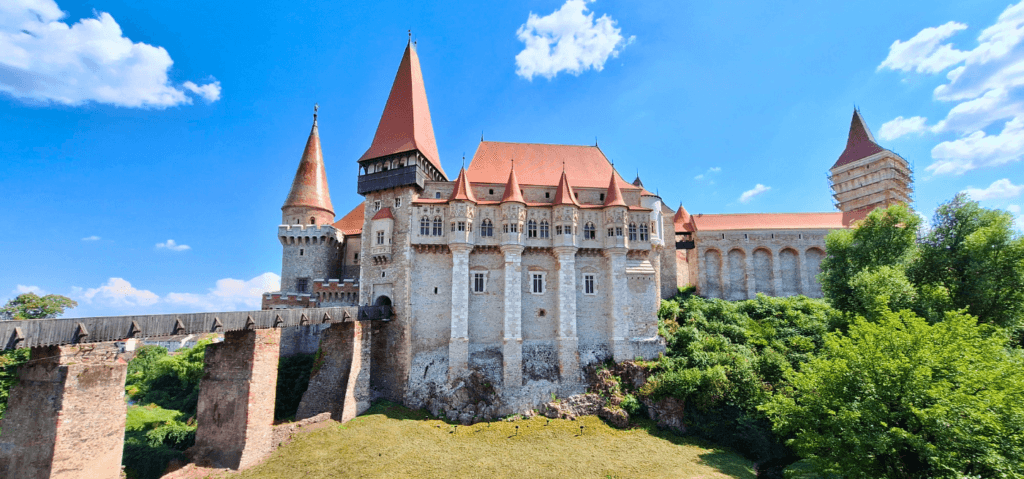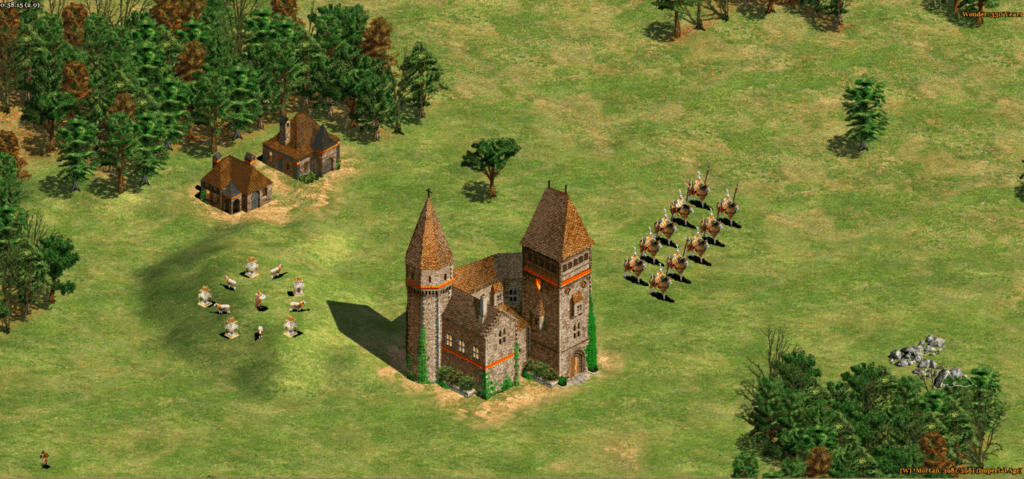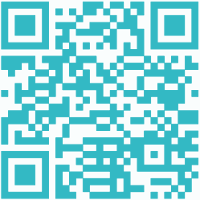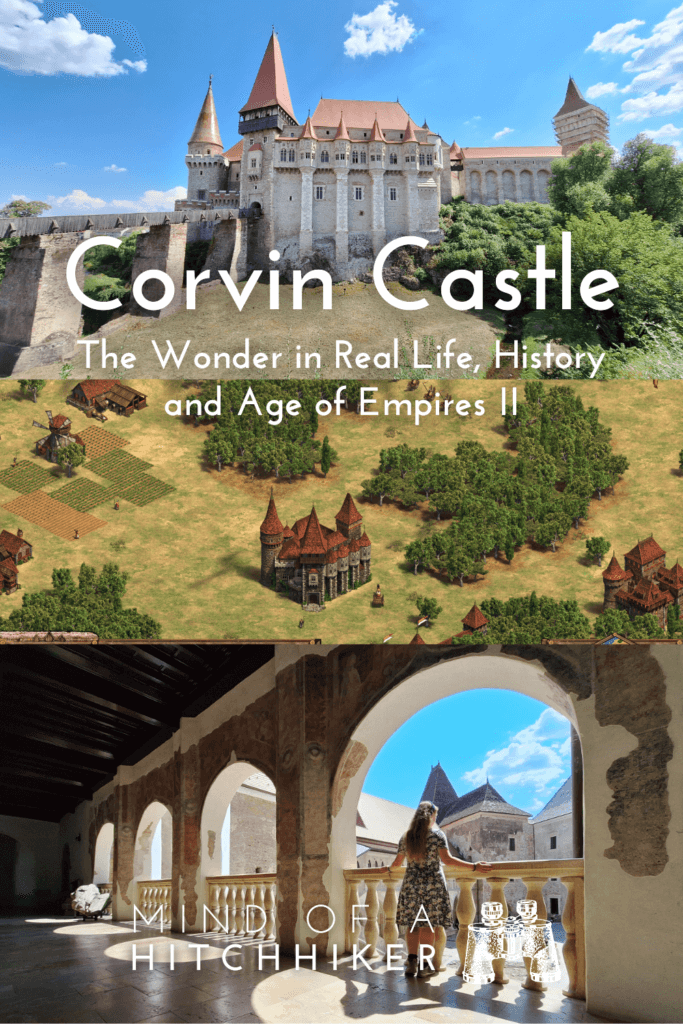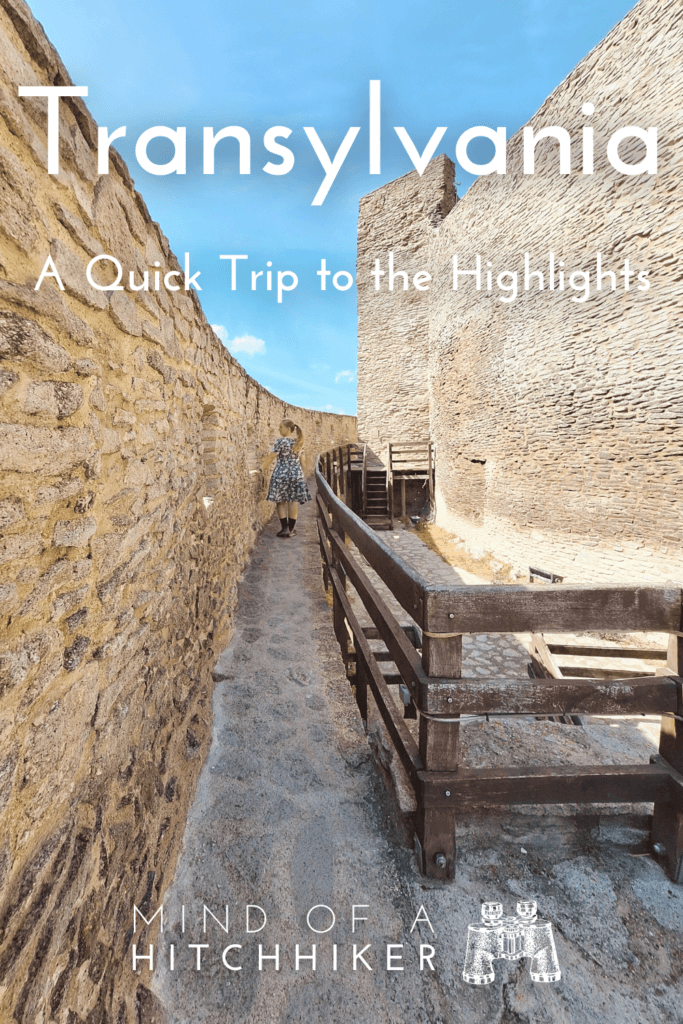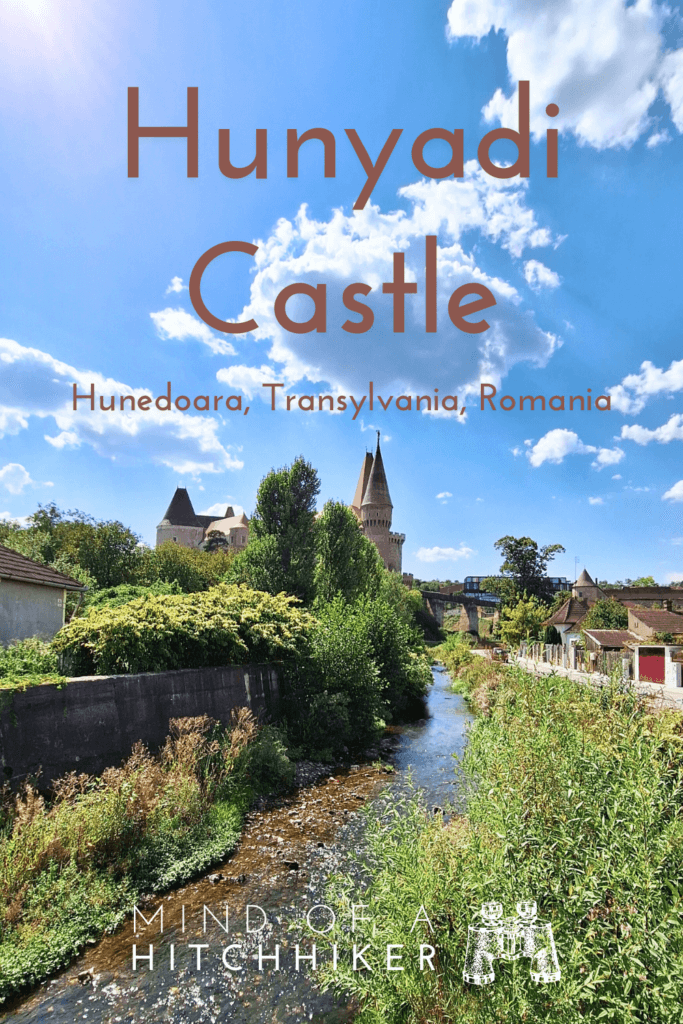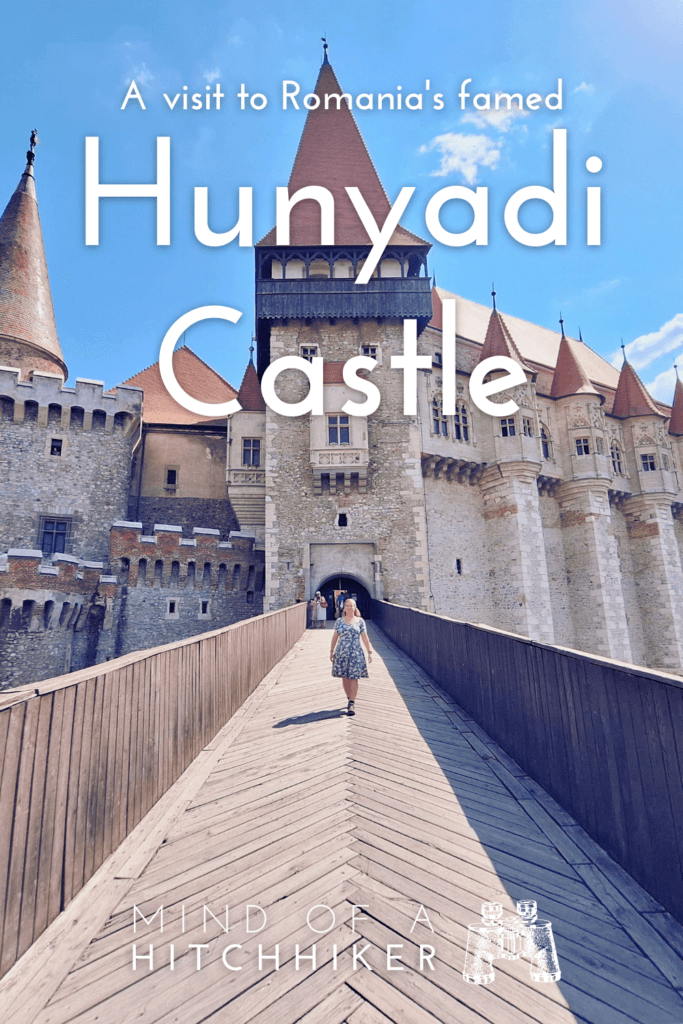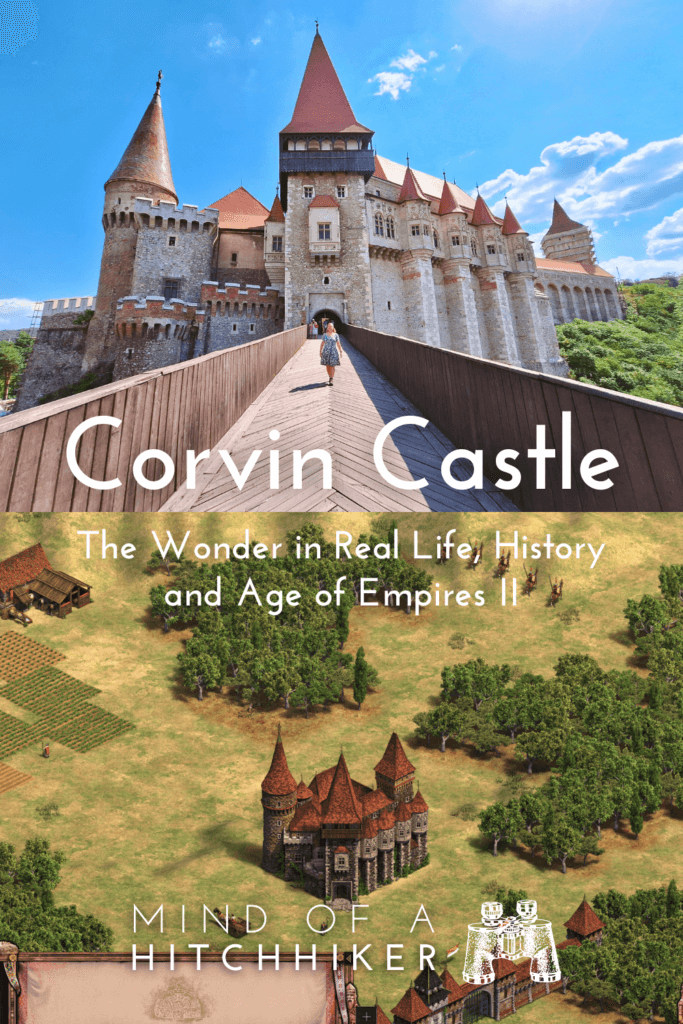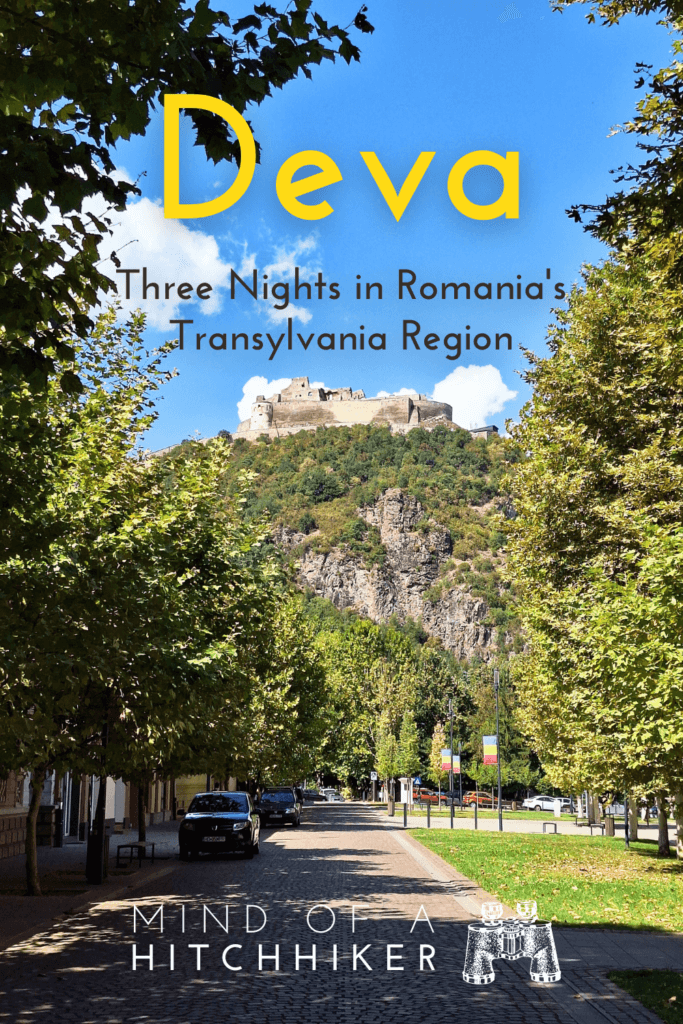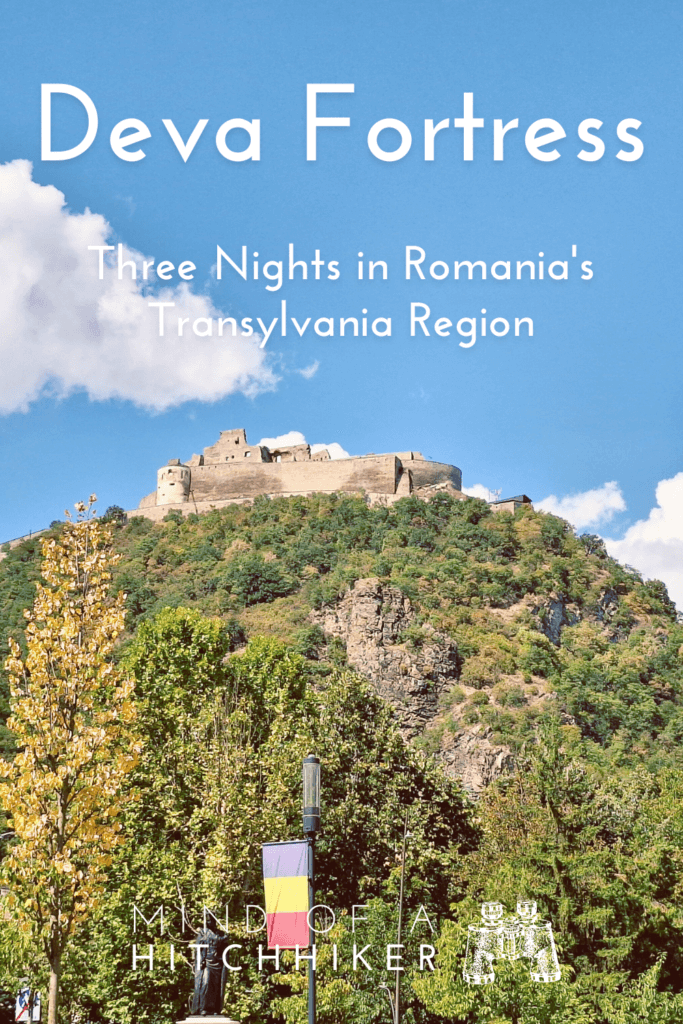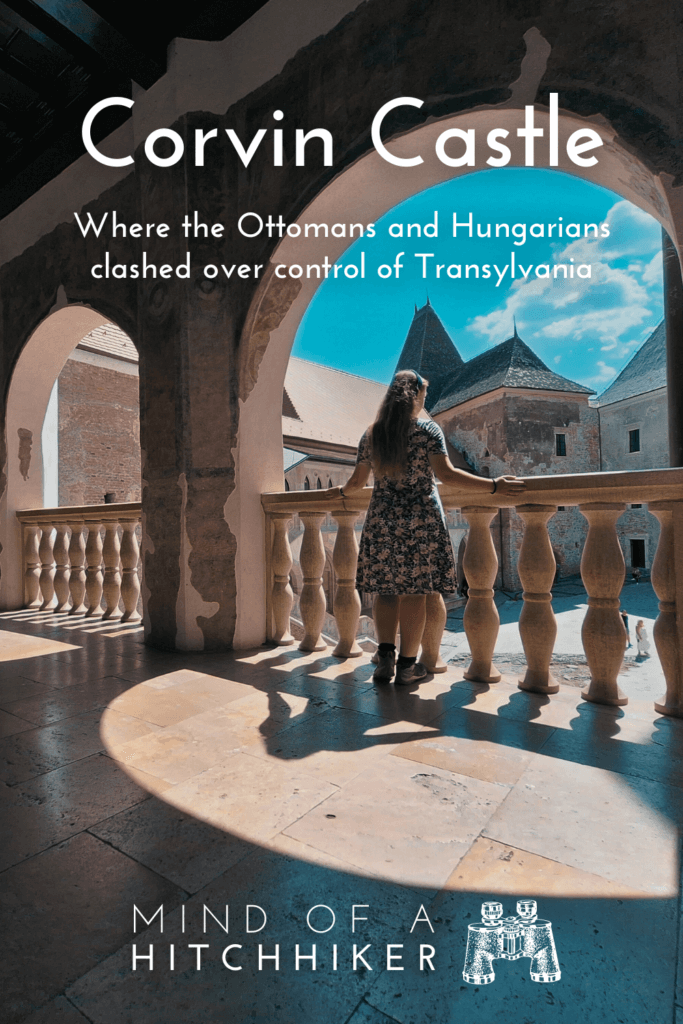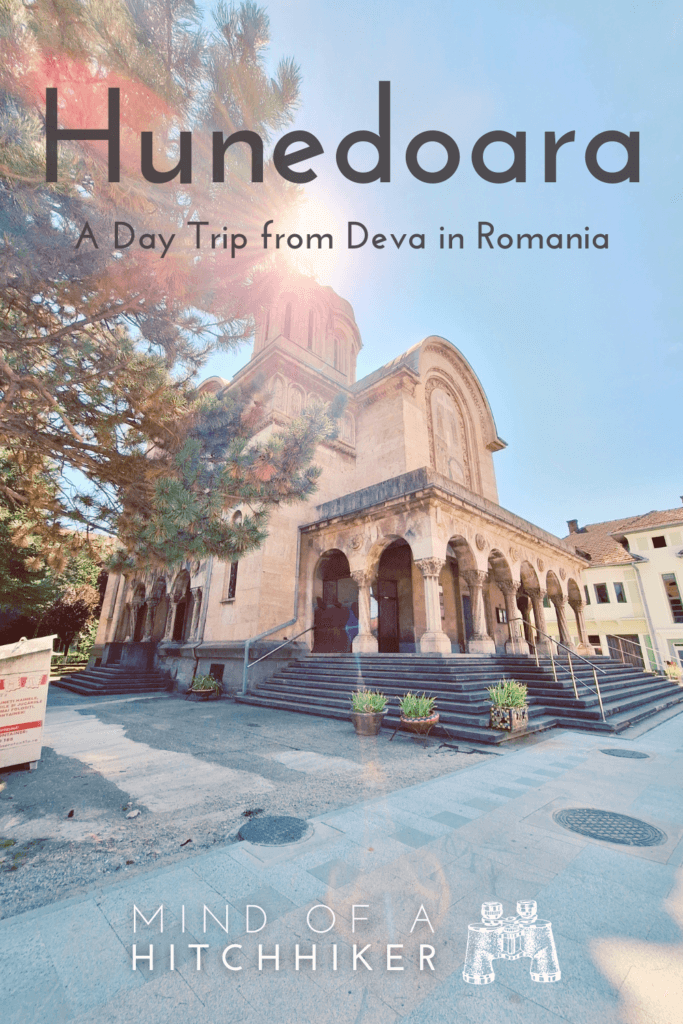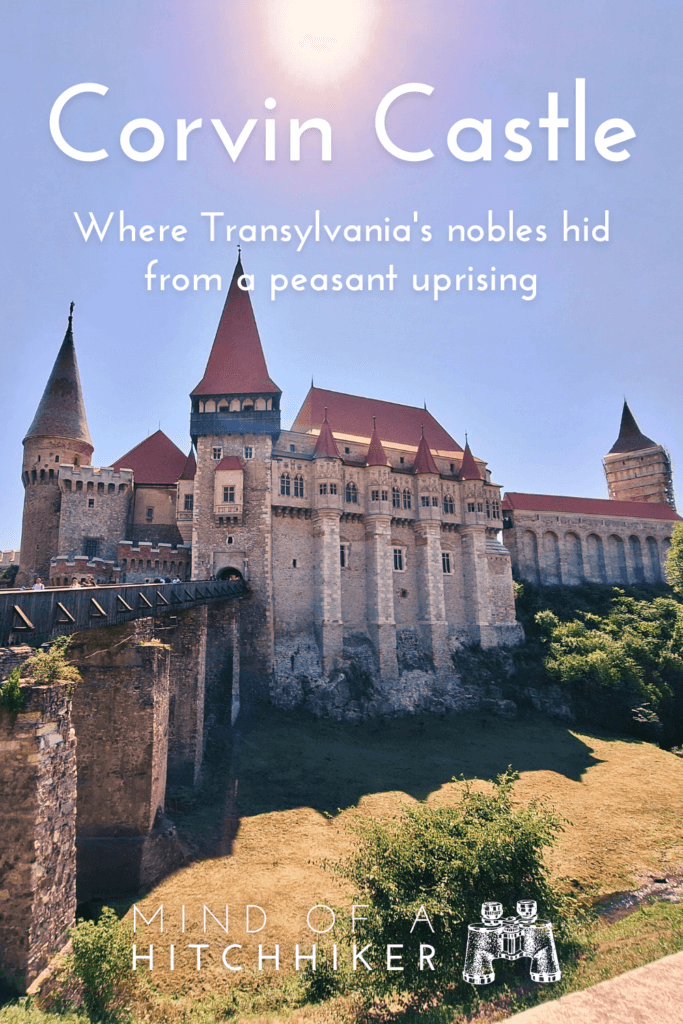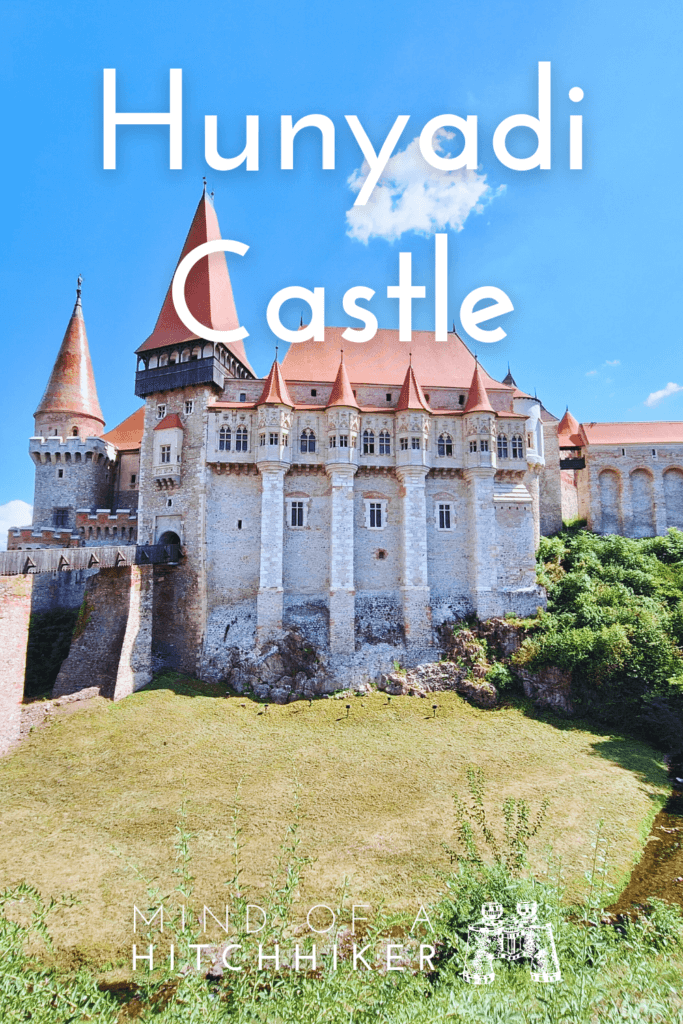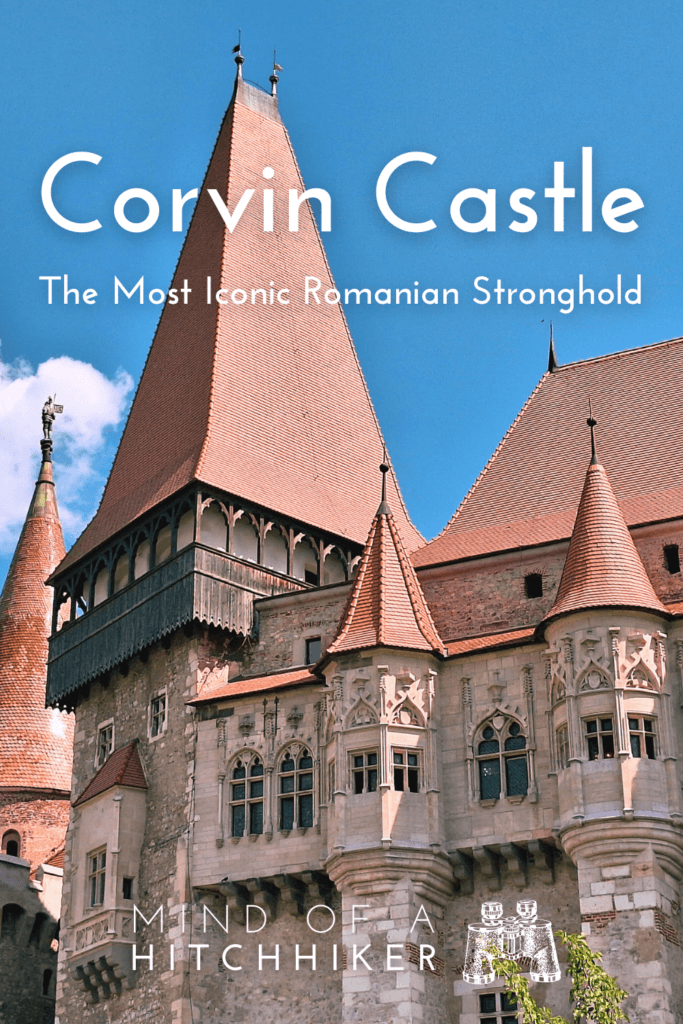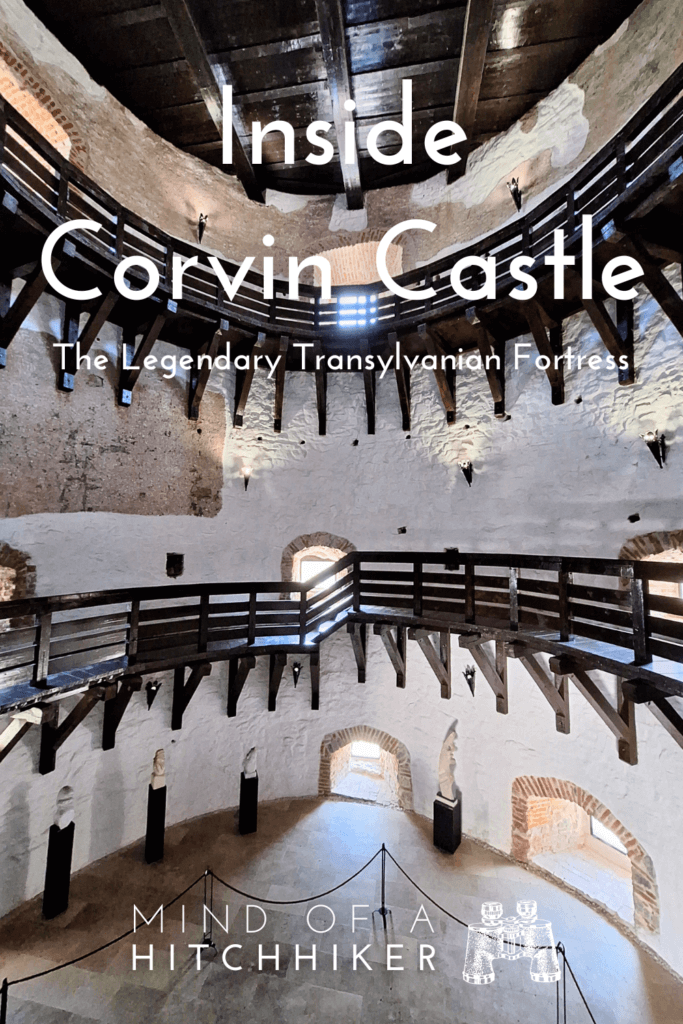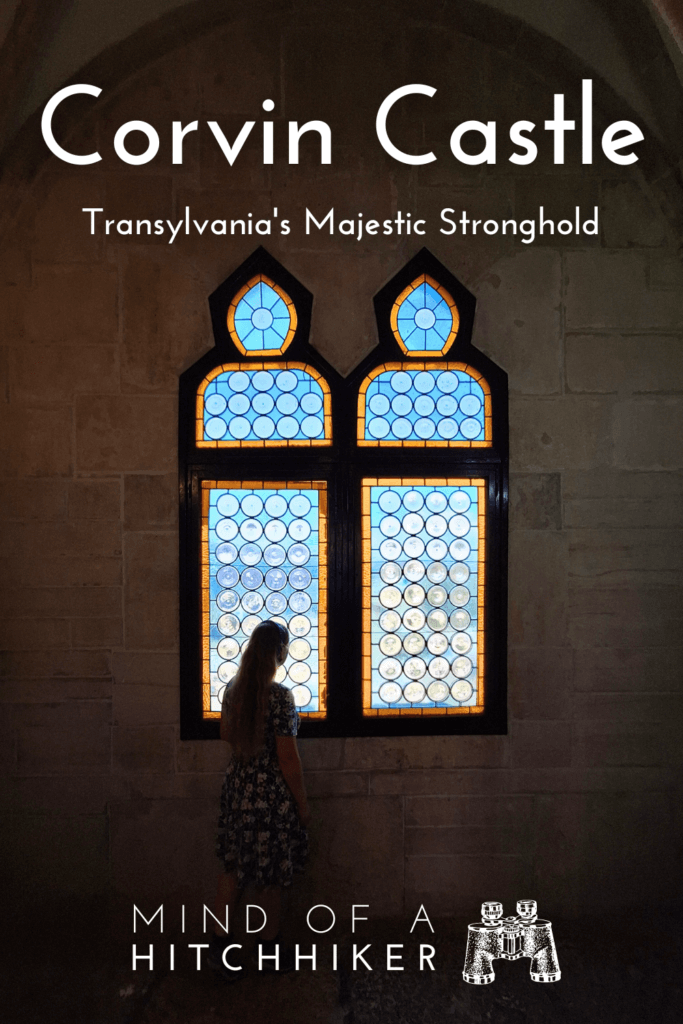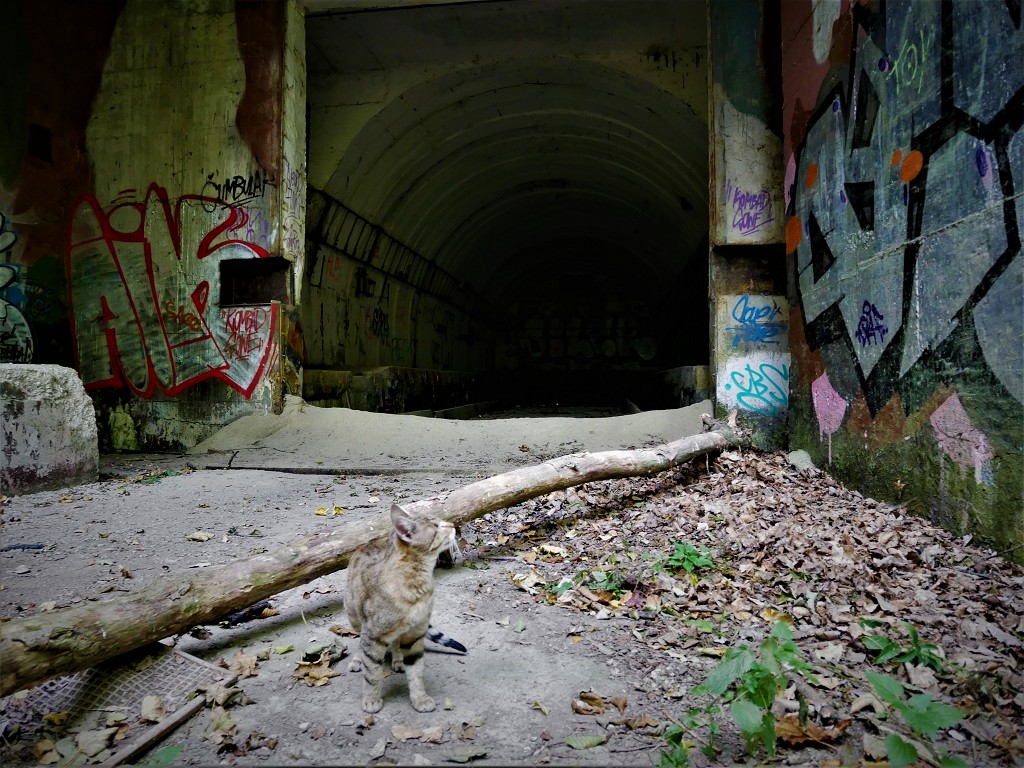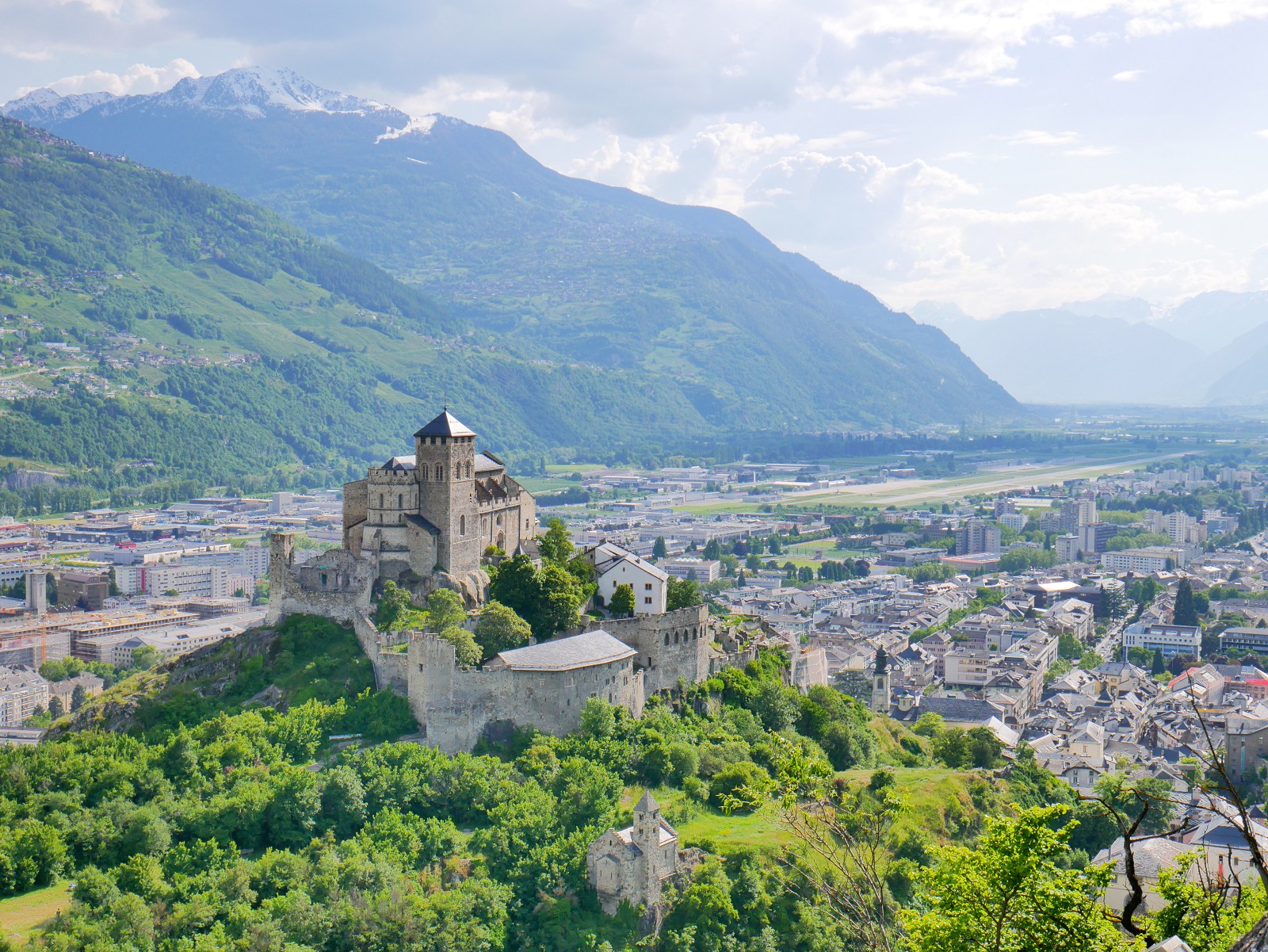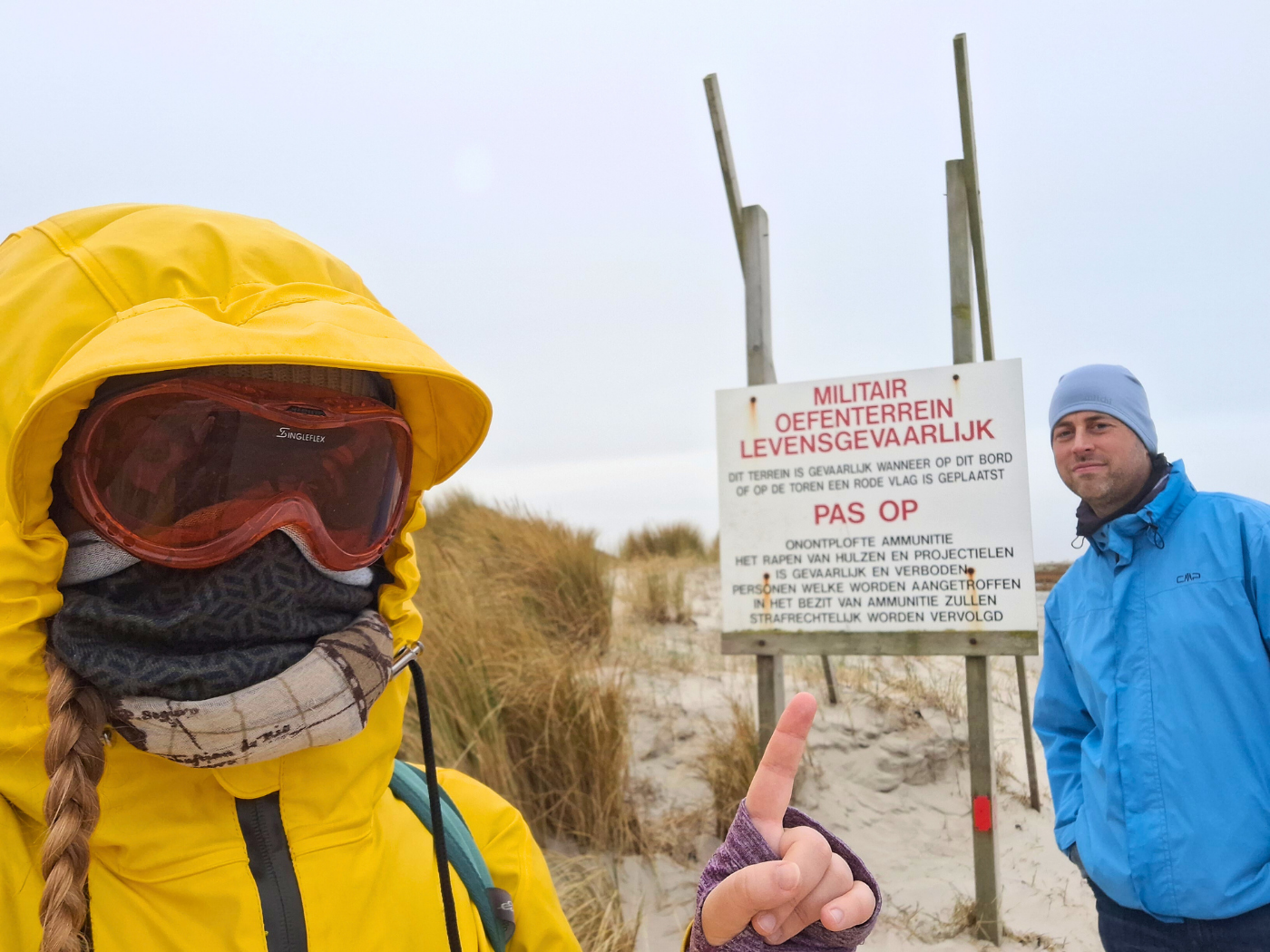
We visited Hunyadi Castle, also known as Corvin Castle on Wednesday the 21st of August, 2024. My interest in going here is that its the wonder of the Magyar civilization in the game Age of Empires II. Since the wonder is in Hunedoara in Transylvania and not connected by rail, we did it as a day trip from the city of Deva
Getting to Hunedoara from Deva
We arrived in Deva from Bucharest the evening before. It was a long train ride. With three nights booked in Deva for two full days, I wanted to frontload the visit to Corvin Castle and go immediately the day after. Since it was August and still the school holidays, I didn’t think getting up at the ass-crack of dawn to take the bus to Hunedoara would help us beat the crowds; Romania’s top destinations have been swamped with domestic and foreign travelers this summer.
So instead of trying to get up early and (probably) set myself up for disappointment, I simply lowered my expectations. Based on my extensive experience with Romania this year, that’s 100% the right course of action. Best I can wish for is a pleasant surprise.
Anyway, the bus leaves from a parking lot near the train station of Deva. We arrived there shortly after 10:00. The people there were quite helpful in pointing out the fleet of minivans. They have signs in their windows which show their route. There are various size buses and vans traveling between Deva and Hunedoara and in summer, they depart every 15 minutes.
We waited about 10 minutes near the van that said it would depart the soonest. When the guy came back, Jonas and I were the first to board. Jonas tried to pay the right amount in cash, but the driver didn’t speak English and he typed frantically on his little ticket machine, swapped small bills of Romanian Lei back and forth until he got kind of mad with Jonas. Completely unwarranted.
The price is 13 RON per person (per direction). That’s €2.61 or US$2.90.
Once we were going, we still picked up many more passengers in Deva before hitting the road to Hunedoara. On paper, the journey takes 45 minutes, but it felt much shorter. We arrived in Hunedoara at 10:50 and began our walk to Corvin Castle, which is still over 2 kilometers. There are also taxis that will bring you there, but we wanted to eat first before visiting the wonder.
We walked to a pre-vetted restaurant called La Cramă. It’s close to a related restaurant called Rustic, which would have been our plan B. We ate some four-cheese pasta, grilled vegetables, a small salad, and a bottle of sparkling water. A typical meal for us vegetarians in Romania.
After the meal, it was after noon. We walked via brand-new pedestrian zone that was partly still under construction at the Saints Constantine and Helena Cathedral. A very beautiful church from the outside. From this park, we had our first (good) look of Corvin Castle. It’s quite huge and we’re not even there yet.
Crossing the Cerna River, we followed another shiny new pedestrian zone to the castle. There were no people around, so I carefully got my hopes up that it would be chill. Once we arrived at the entry gate with an old lady begging, we knew better what the situation was going to be. Through the gate are a bunch of souvenir shops, sugary treat stands, and hundreds of people in the hot sun. There were some other museums here onsite, but that’s not what we’re here for. Time to hit up the wonder of the Magyars.
A Crowded Visit to Corvin Castle
The ticket booth is right before pedestrian bridge. This bridge connects the plaza with Corvin Castle and crosses the Zlaști River. We waited for a few minutes to buy a ticket. The queue wasn’t the worst. That will be 45 RON per person, or €9.04 or US$10.05. As someone who has recently looked at the cost of other European attractions: not great, not terrible.
During the summer, Corvin Castle is open every day from 9:00 till 20:00. Except Mondays, which are only from 12:00 till 20:00.
We scanned our tickets at the turnstiles, which were still manned by a security guard. There’s very little trust in Romania.
Immediately on the bridge, it was quite crowded. But to be fair, the vista from the bridge is truly iconic. As one of the biggest castles in Europe, the scale of Corvin Castle is hard to describe. That’s in part because of the deep moat around the castle.
The sun was right behind the big main tower, casting a bit of a shadow onto the bridge. You could hear the water from the small brook Zlaști clash over the rocks. But looking down, it was merely a weir fooling us to think there’s lots of water in the moat. It’s a big drop down. I imagine several cell phones being dropped over the edge each year.
The entrance gate provided some respite from the sun, although it was very crowded with people. In an attempt to explore every corner of one of the seven wonders of Romania, we ducked into the first room. Most people will likely need some kind of map of Corvin Castle, so here it is:
A Short History of Corvin Castle
Route + Exhibitions
Our route was mostly clockwise, though our entire visit was guided by where the masses weren’t moving towards. Most people were in small groups, but there were also some school classes. I don’t know how the latter happens in August as it should be still the school holidays in Romania.
The first room was set up as a torture chamber and had some mannequins in various torturous contraptions. Educational to some, tasteless to many, and kinky to an unknown number. The real torture was the person who farted in the underground, poorly-ventilated room. Let’s move on.
Next up, we climbed some stairs and found a room setup like a kitchen. That place led to a balcony with some nice views right below the Mace and New Gate towers.
Though the logical route would be to go to the chapel from here, we first returned to the courtyard and walked to the well. The well was really cool as it’s scary deep. Again, don’t drop any precious items in it. The story of how it was built by Ottoman slaves who were promised freedom if they completed the job is quite heartbreaking. One of the slaves left an inscription, which I hoped to find in person but couldn’t.
There was quite some restoration going on near this place, from where it’s possible to go into some cellars that house some of the coats of arms part of the castle’s history (lapidarium).
Out via the courtyard, we walked up some stairs through a hallway past lots of modern art and pretty windows. This led to a great hall with a massive table good for some Game of Thrones scenes and more modern art all the way into another corner tower. Somehow there was a guy here who was allowed to make money drawing caricatures. Not our thing.
Through here, we could make our way to the White Tower, which was my favorite tower in Corvin Castle. It had some nice dodgy stairs and we could go quite high and still have a nice view. Most of the towers had mediocre views or no views, just the risk of falling off some dodgy neo-Medieval stairs.
From here, the route became a bit fuzzy. We walked past the exhumed corpse of a woman who was buried with bronze hair rings from somewhere around the 11th century. Another room had traditional Romanian clothing and a weaving contraption. We continued to the remote Neboisa tower, waiting quite a bit for a group of kids to get out. It was quite hot and everyone was sweating. Up in the tower, most of the windows were also closed, which certainly didn’t help.
From there we made it to the Council Hall, which was very pretty and spacious and had a nice gallery with windows. We returned to the busy area and climbed up the Capistrano tower, which had a similar vibe to Neboisa. Back through the Council Hall, we had some time to look around at the weapons on display. The guns were cool.
We continued westward and found a way to a room with lots of tobacco and nargileh pipes on display. This exhibition has the ability to singlehandedly make smoking cool again.
There was a way up to the New Gate Tower, which is above the entry bridge to Corvin Castle. It has a very cool view and is nice and breezy. Luckily, it wasn’t too busy anymore. From here you also have a good view of the knight statue atop the Mace Tower. If you’re two people who like cooperating to take nice photos, it’s possible for one of you to head to the Mace Tower and lean out of a window to take a nice picture from the New Gate Tower.
To get to the Mace Tower, we walked past an exhibition with some nice women’s dresses from the olden days. Very demure, very mindful. The Mace Tower has some nice vistas of Hunedoara that are relatively unobstructed.
From there, we walked down and ended up on the higher level balcony we’d been on before above the room with the kitchen. There’s access to a room there furnished as a nobleman’s bedroom. It lacked imagination a bit.
On the balcony, I took some photos before heading down and trying to find the chapel I missed on the first round. Only the upper balcony looking down on the altar was accessible at this time. There are some nice modern stained glass windows here, including one depicting Ioan of Hunedoara (John Hunyadi).
Back out into the courtyard, we still visited the Knights’ Hall, which had more modern art and a heavy-looking statue of Ioan de Hunedoara.
Outside again for the umpteenth time, we found another ground floor room which had creepy 3D paintings that will haunt you in your nightmares. After that, we decided we were done and headed out of Corvin Castle. The crowds had thinned out a bit and we could take some okay photos without too many people on the approach bridge.
I was satisfied with my visit, particularly because my expectations for crowd management had been abysmal.
Walking around Corvin Castle
Once outside, we decided to still try to walk around Corvin Castle. From the outside, it feels like we’ve only explored 10% of the castle as much of it is supports or buttresses to make it that tall and big. I think the accessible portion of the castle is quite small. Inside the castle there’s very little context for its size.
In an attempt to see a bit more, I planned a route in my OSM app that was a little over one kilometer and would go via a viewpoint that would show the backside of the castle. The first bit followed the Zlaști River upstream. There were some people walking next to the stream, sticking their feet in to cool down. But we didn’t go down and followed our route on the main road from some kind of mine. It wasn’t a pleasant place to walk.
Once off the main road, we had to walk past people’s houses uphill to the mapped Dealu Sanpetru viewpoint. But the dogs in people’s gardens started to bark and the path to the viewpoint had some loose dogs. So we abandoned the mission and walked downhill on the other side. The views on Corvin Castle were not better than what we’d already seen. The only plus is that we met a cat, but he was too scared for pets.
Coming to think of it, perhaps it’s not really worth the entry price when it’s so damn busy. I’m wondering if outside the Romanian school holidays (late May till early September) things become more doable. And seeing pictures online of Corvin Castle in winter under a snowy veil, it seems like any other season than heatwave summer would be better to visit.
Returning from Hunedoara to Deva
We crossed the Cerna River again to the pedestrian zone at the square that’s under construction. The South Asian workers had continued making it all nice under the harsh sunlight.
We headed into a pastry shop with English writing on the window for latte macchiato and a pistachio éclair to share. Though promising, it turned into yet another baffling Romanian experience. The lady made an error and overcharged us, then didn’t bother rectifying her mistake. Romania remains a weird-ass country to us.
Next door, we walked to the Saints Constantine and Helena Cathedral and entered inside. This was a rather nice place of worship. Very dark inside but the shiny things shine well in such an environment.
We walked back to the bus station in Hunedoara and found the slightly larger bus back to Deva. The price was the same, but this time, no bus driver got mad at Jonas for no reason.
All in all, I saw what I wanted to see. But I wouldn’t call this visit a smashing success, unlike the visit to Deva Ruined Fortress the following day…
The fortress ruins of Deva
Corvin Castle as Represented in Age of Empires II
Hover over this picture with your mouse on computer 🖱️ or tap and hold on phone 👆 to see the comparison.
Warning: if you keep reading there might be spoilers about the campaign. If you don’t want to read those, first play the campaign and then haul your ass back here.
Campaign appearances of Corvin Castle
So, first of all, I’ve noticed that not many wonders in Age of Empires II are castles, palaces, or fortresses. Most of them are actually religious buildings. The last wonder we’ve visited that also falls in this non-religious nobleman category is Trakai Castle in Lithuania, wonder of the Lithuanians. That one was pretty touristy and pretty cool as well.
But I digress…
The campaign wherein one plays as the Magyars is the Vlad Dracula. The specific scenario in which Corvin Castle makes an appearance (as Bran Castle) is the second one called The Return of the Dragon. In the whole five-scenario campaign, you play as either Turks, Slavs, or Magyars, which reflects Vlad the Impaler’s alignment at several stages in his life.
Playing as Vlad the Impaler of the Magyars, your goal is to survive, reach Bran Castle in Brașov (i.e. the wonder Corvin Castle), and kill Vladislav II in Târgoviște (1456). Once you reach Bran Castle, it will automatically recruit Paladins every now and then. The map represents Wallachia, the Danube River, and Northern Bulgaria.
It also appears in the scenarios Pax Mongolica, Saving the Huts, and A Worthy Opponent. But in those latter three, you don’t play as the Magyars and Corvin Castle is either a passive object or it’s your objective is to destroy Corvin Castle.
Also, one should know that the Magyar wonder looks very different in the Definitive Edition compared to the old The Forgotten. In the latter, it’s a rather underwhelming wonder. I’m happy they improved the design in the new Age of Empires II.
The Campaign’s Story vs. History
The bigger event around it is the Hungarian–Ottoman Wars between the Kingdom of Hungary and the Ottoman Empire. Wallachia and Transylvania – contemporary Romania – were principalities and vassal states shuffled around by both.
The founder of Corvin Castle – John Hunyadi (~1406–1456) – lived roundabout at the same time as Vlad the Impaler (~1431–1476). It’s unclear to me if John Hunyadi and Vlad the Impaler met, but John Hunyadi did meet Vlad the Impaler’s father, Vlad II Dracul. Any contender to the title Voivode (Prince) of Wallachia needed John Hunyadi’s support at the time.
Many historians claim Vlad the Impaler was a prisoner in the dungeons of Corvin Castle on orders of Matthias Corvinus in the 1460s and 1470s. Others say it was Viségrad Castle or the Labyrinth of Buda Castle. The reason for his imprisonment was unclear, but the entire history of Vlad points to a bloodthirsty individual with claims to a throne that was hard to control.
John Hunyadi died from disease in Zemun near Belgrade nine days before Vlad the Impaler killed Vladislav II near Târgșor, itself near Târgoviște. Vlad the Impaler died in late 1476 or early 1477 in Wallachia in a surprise attack.
AoE2 Corvin Castle Design vs. the Real Thing
I understand why they chose Corvin Castle for the aesthetics and called it Bran Castle for the storyline. Though both look cool, Corvin Castle – some 200 kilometers west of Bran Castle – is the more epic structure. However, due to the renovations in the 19th century, Corvin Castle has a more gothic look today than it probably had at the time of this dramatized campaign.
To ascribe Corvin Castle to the Magyars (Hungarians) instead of creating a separate Wallachian civilization to fit the Vlad the Impaler story is fair. At the time, it was in the hands of the family that had great power in the Kingdom of Hungary. Without encouraging Hungarian irredentism, it’s fair to say that Corvin Castle is mostly a Hungarian achievement.
Want to Visit Corvin Castle Virtually?
Here’s a virtual tour if you can’t make it there yourself.

